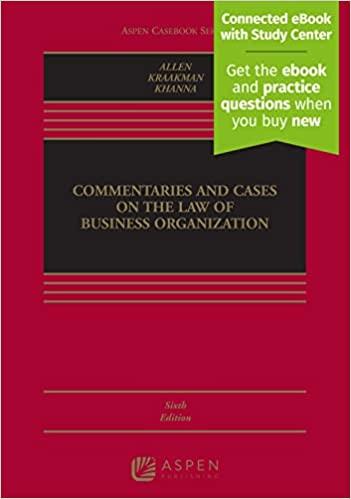Question
Assume that a complaint was filed and served on the defendant in the Forrester case on Friday, March 29, 2018 Using the Disclosure Time Frame
Assume that a complaint was filed and served on the defendant in theForrestercase on Friday, March 29, 2018 Using the Disclosure Time Frame Summary (Federal), determine the last possible date for the following:
1. The court scheduling conference
2.Parties' planning meeting
3.Report to court on parties' planning meeting
4.Disclosure from party joined on Tuesday, August 6
5.Objections to disclosure
6.Objections to any pretrial disclosure, assuming the trial date has been set for Monday, December 9
For each 1-6,provide the Federal Rule used (including subpart) and the date as instructed.
Reading Reference:
Disclosure Time Frame Summary (Federal)
Apply Your Knowledge
Using your state and federal courts as a guide, determine whether any of the state or federal court judges have local rules to follow when addressing discovery and e-discovery issues. Find any forms, if available, that the judges require relating to discovery. Familiarize yourself with the local practice of the judges in your jurisdiction.
- Parties' planning meeting: as soon as practical, but at least 21 days before court scheduling conference.
- Court scheduling conference/date for scheduling order: as soon as practical, but within 90 days of first appearance of defendant and within 120 days since complaint served on defendant.
- Written report to court of parties' planning meeting: within 14 days after parties' planning meeting.
- Objections to disclosure: at parties' planning meeting and set out in planning report.
- Disclosure (of persons likely to have supporting discoverable information; copy or description of supporting documents, data, and tangible things; calculation of damages and supporting materials; and applicable insurance agreements): unless otherwise stipulated, ordered, or properly objected to, within 14 days after parties' planning meeting.
- Disclosure from party served or joined after parties' planning meeting: unless otherwise stipulated or ordered, within 30 days after served or joined.
- Disclosure of expert testimony: unless otherwise stipulated or ordered, at least 90 days prior to trial or date set to be ready for trial. If solely to rebut previously disclosed evidence: within 30 days after opponent's disclosure.
- Response to notification from party that information produced is subject to claim of privilege or protection: "promptly."
- Pretrial disclosure (of witnesses, expected trial testimony of witness by deposition, and documents or exhibits): unless otherwise directed, at least 30 days before trial.
- Objections to use of evidence at trial disclosed in step 9: within 14 days after disclosure or will be waived.
SeeExhibit 7.5.
Exhibit7.5
Paralegal's Disclosure Checklist
- Review case file, pleadings, complexity, and so on.
- Give special attention to e-disclosure and discovery needs [26(b)].
- Unless previously done, consult with attorney and meet with client regarding assessment of client's e-information storage system, if pertinent to case.
- Unless done, communicate to client disclosure and discovery requirements and the need to preserve evidence, including e-stored information (discussed further inChapter 9).
- Identify any pertinent e-stored information "not readily accessible"; use log and record basis for conclusion.
- Consult with attorney on preferred method of dealing with post-production claims of privileged or protected information.
- Discuss with attorney the need for a protective order to:
- preserve opponent's pertinent information or
- legitimately protect aspects of client's information from disclosure and discovery (discussed further inChapter 9).
- Get date for court scheduling conference/order.
- Calculate other deadlines based on this date.
- Modify according to subsequent plan, stipulation, or court order.
- Meet with the supervising attorney to determine desired depth and amount of disclosure and discovery needed and any objections to disclosure.
- Assist the attorney in arranging the parties' planning meeting.
- Assist at meeting.
- Draft agreed plan (Exhibit 7.2), stipulations, and objections as directed.
- Submit the parties' planning report to court if so directed.
- Using the investigation plan (Chapter 3) or similar approach, identify, gather, and organize the supporting evidence to be disclosed as set out in Rule 26(a). Remember to include any pertinent e-stored information.
- Review each item to be disclosed to raise any concerns about client confidentiality and/or attorney work product. Do this throughout the disclosure and discovery process.
- Format materials to be disclosed as directed. They must be written, unless court orders "otherwise" [26(a)(4)].
- Include signature line and attorney's address.
- Give formatted materials to supervising attorney for final review and signature.
- Serve disclosure materials on all parties.
- Upon receipt of disclosure materials from the other parties, review these materials carefully to see that all disclosure requirements have been met.
- Prepare disclosure of any expert witness, accompanying report, and other materials as set out in Rule 26(a)(2). Review parallel materials from other parties.
- Using the pertinent steps outlined above, serve and promptly file with the court all pretrial discovery, including witnesses to be called, exhibits, and other evidence described in Rule 26(a)(3). Do at least 30 days before trial.
- In consultation with the supervising attorney, prepare any objections to pretrial material disclosed by the other party within 14 days of its receipt.
- Check calendar dates periodically to see whether supplementation of previously submitted disclosure is needed. Supplement as required [Rule 26(e)].
- Use a tracking log for all disclosure and discovery.
Step by Step Solution
There are 3 Steps involved in it
Step: 1

Get Instant Access to Expert-Tailored Solutions
See step-by-step solutions with expert insights and AI powered tools for academic success
Step: 2

Step: 3

Ace Your Homework with AI
Get the answers you need in no time with our AI-driven, step-by-step assistance
Get Started


